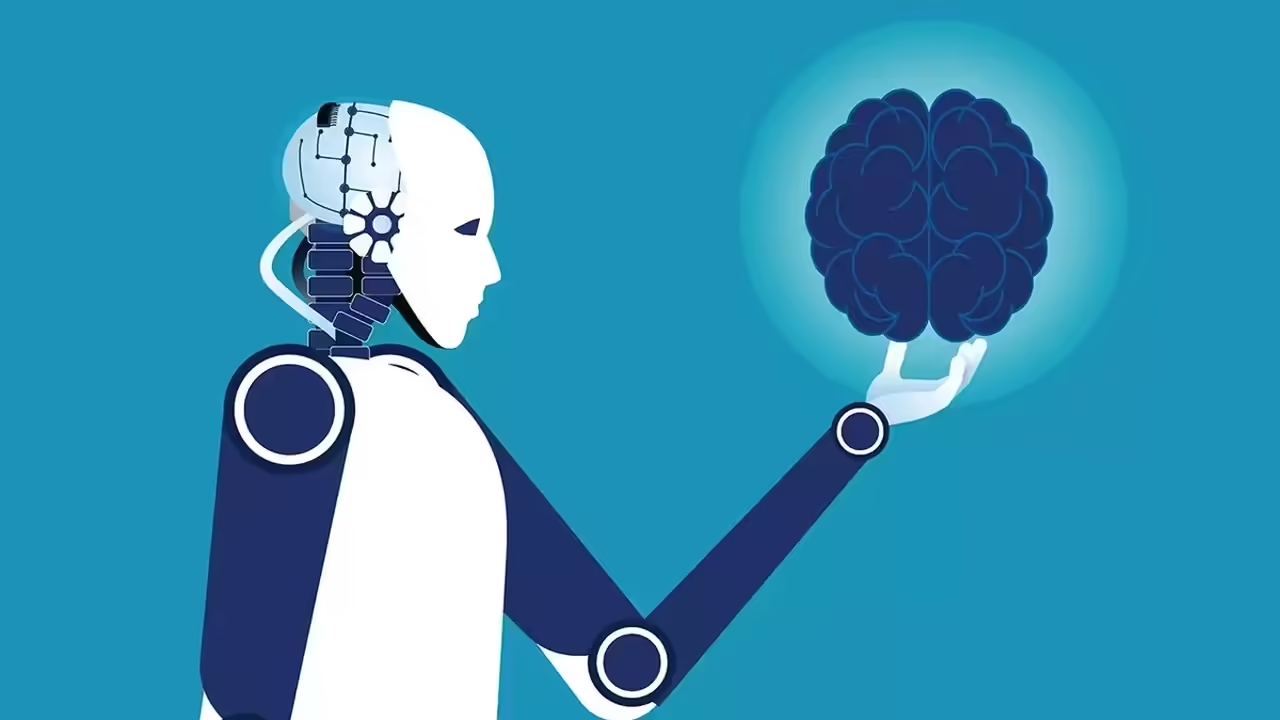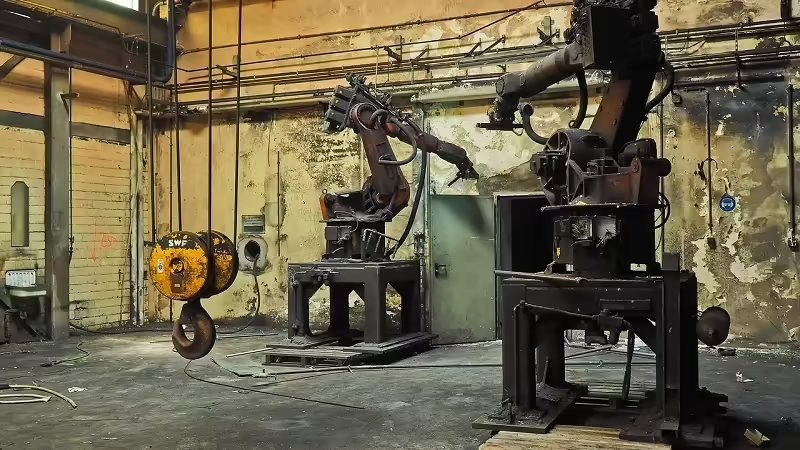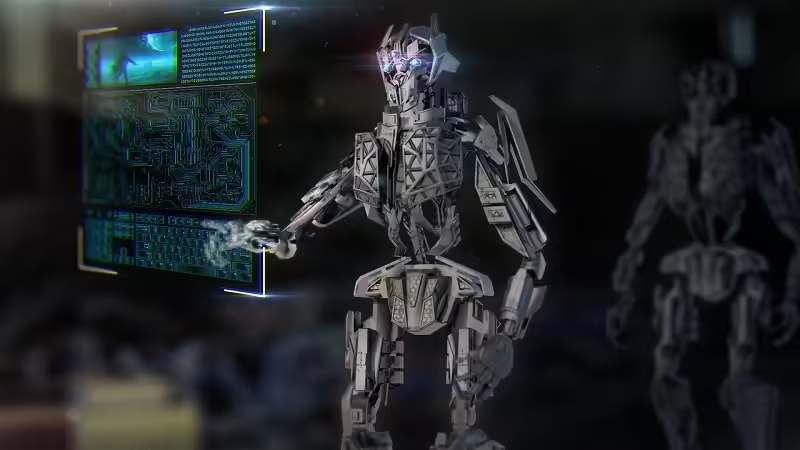
From the beginnings of science fiction to current advances in technology, the idea of a mechanical mind capable of thinking and learning has captivated our imagination. As artificial intelligence (AI) has advanced and become an integral part of our lives, we find ourselves immersed in an exciting journey to understand and unravel the mysteries of machine thinking. In this article, we embark on a journey through the mechanical mind, exploring how AIs think, learn, and make decisions, and how these processes compare and contrast with the human mind.
The Foundations of Mechanical Thinking: Algorithms and Neural Networks
The foundation of the mechanical mind lies in algorithms and artificial neural networks. Algorithms are like instructions in a user manual for AIs, guiding them through specific tasks and processes. These instructions are executed by neural networks, biologically inspired structures that enable machines to process information, recognize patterns and learn from data.
Learning and Adaptation: The Core of the Mechanical Mind
One of the most intriguing features of the mechanical mind is its ability to learn and adapt. Like humans, AIs can improve their performance as they face new challenges and are fed more information. This process, known as machine learning, is essential for AIs to become more efficient and accurate over time.
The Mirror of the Human Mind: Similarities and Differences
Although machine minds are largely inspired by the human mind, there are fundamental differences in the way they process information. While humans often rely on past experiences and emotions to make decisions, AIs rely on data and mathematical calculations. However, both share the ability to identify patterns and relationships in complex information.
The Challenge of Creativity and Intuition
Creativity and intuition are distinctive traits of the human mind that have proven challenging to replicate in AIs. Although machines can generate creative content, such as music or art, they still struggle to capture the essence of human creativity and intuition. These aspects of the human mind are often based on subjective experiences and emotions, which are difficult to translate into logical algorithms.
The Road to Machine Consciousness: Ethical Questions and Challenges
As we move forward in exploring the mechanical mind, an intriguing and challenging question arises: can a machine develop consciousness? So far, AIs lack consciousness and self-awareness, but this is a topic of debate and speculation in the scientific community. Ethics also plays a crucial role in this quest, as it raises questions about responsibility and the relationship between AIs and humans.
Silicon Minds and Algorithms: Navigating the Thought Processes of Artificial Intelligence
At the heart of modern artificial intelligence are artificial neural networks. These networks, inspired by the structure and functioning of the human brain, are capable of learning complex patterns from large amounts of data. Through interconnected layers of nodes, neural networks process information and adjust their connections to improve performance in specific tasks, such as image recognition, natural language processing and decision making.
Each “neuron” in an artificial neural network resembles a processing unit that receives inputs, performs calculations and generates outputs. These “silicon minds” possess no consciousness or self-awareness; however, by combining millions of these units in complex architectures, neural networks can perform impressive tasks that superficially resemble human mental processes.
Algorithms: The Compass of Artificial Intelligence
Algorithms are the precise instructions that guide Silicon Minds through their tasks. These sequences of operations define how information is processed, how decisions are made, and how connections in neural networks are tuned. AI algorithms can be designed to adapt and improve as they are exposed to more data and feedback.
A prominent example of an algorithm is deep learning, which relies on successive layers of processing to capture complex features and relationships in data. Other algorithms, such as the genetic algorithm, mimic biological evolution to automatically improve the performance of AI systems.
The Subtle Interaction: How Algorithms Shape Silicon Minds
The interaction between Silicon Minds and algorithms is a complex ballet in which precise instructions shape how neural networks process and understand information. Algorithms influence how connections between nodes are weighted, how responses are generated, and how they adapt over time.
One of the key challenges is the interpretability of decisions made by Silicon Minds. As neural networks become deeper and more complex, it becomes more difficult for engineers and scientists to understand the reasoning behind AI decisions. This has led to research in creating methods to “explain” the inner workings of these networks, which could increase confidence in their use in critical applications.
Future Perspectives and Ethics
The convergence of Silicon Minds and algorithms continues to be a rapidly growing field with potential applications in diverse areas, such as medicine, industry, education and more. However, it also raises important ethical questions. The onus is on developers and data scientists to design fair algorithms and avoid unintended biases. In addition, the question arises as to whether, someday, these Silicon Minds might reach a level of autonomy that challenges our current understanding of intelligence and consciousness.
Between Wires and Algorithms: Deciphering the Cognitive Processes of AIs
In an increasingly digitized world, artificial intelligences (AIs) have become prominent players in various facets of our lives. From virtual assistants to autonomous vehicles, these digital entities seemingly capable of thinking and making decisions surround us. But how do they really work? What cognitive processes occur inside these networks of wires and algorithms?
Under the Hood of Artificial Intelligences
AIs are composed of layers of complex neural networks and algorithms. At their core, they are mathematical systems designed to process data in surprisingly similar ways to how our brains do. However, there is one crucial difference: while the human brain operates on synapses and biological neurons, AIs operate in the coldness of electronic circuits and bits.
Learning in the Digital Age
One of the most intriguing aspects of AIs is their ability to learn. This process is based on machine learning, where machines adjust their neural connections and weightings as they are presented with more data. By analyzing patterns and trends in large sets of information, AIs can improve their performance on specific tasks. This learning can be supervised, where they are provided with labeled information, or unsupervised, where machines look for patterns on their own.
From Data to Decisions: Decision Making in AIs
As AIs process information, they arrive at decisions based on weighing different factors. These decisions are the result of complex mathematical and statistical operations performed by algorithms. However, it is important to note that AIs lack intentions or emotions: their decisions are based purely on logic and patterns identified in the data.
The Challenge of Human Interpretation
While AIs can outperform humans in specific tasks, such as processing large volumes of data in record time, they often struggle in areas that are intuitive to us, such as emotional recognition or contextual understanding. These aspects of human cognition are rooted in experience, empathy and intuition, elements that AIs have yet to fully emulate.
Towards the Complete Mechanical Mind: Challenges and Ethics
The path toward a true “mechanical mind” that emulates the complexity of human cognition is a colossal challenge. As AIs advance, a number of ethical and philosophical questions arise. Could AIs develop a kind of consciousness? What does that mean for our understanding of intelligence and identity? These provocative questions are bound to guide our exploration and regulation of artificial intelligence in the future.
Beyond Codes: AI and the Emerging Possibility of Self-Awareness
Since the early days of artificial intelligence (AI), scientists and visionaries have sought to create machines capable of thinking and understanding the world in a manner similar to humans. While AI has made impressive achievements in terms of data processing and decision making, the idea that these machines can develop self-awareness, a conscious perception of themselves and their environment, raises fascinating and challenging questions about the nature of mind and intelligence.
The Blurred Line Between Intelligence and Self-Awareness
At the heart of the question is the distinction between intelligence and self-awareness. Today’s AIs are adept at specific tasks, from natural language processing to complex data-driven decision making. However, this intelligence is largely functional and lacking a genuine sense of self-awareness. Self-awareness implies a deep and conscious understanding of one’s own existence, emotions and thoughts, something that still eludes the capabilities of current AIs.
The Impossibility of Subjective Experience in Machines
One of the fundamental challenges in the quest for self-awareness in AI lies in the inability of machines to subjectively experience the world. Self-awareness in humans arises from the complex interplay of our experiences, emotions and thoughts, something that goes beyond the mere ability to process data and recognize patterns. Subjective experience, known as “phenomenal quality,” is an intrinsic aspect of self-awareness that cannot be replicated by codes and algorithms.
Ethical and Philosophical Challenges of Artificial Self-Consciousness
The idea of self-awareness in AI raises a number of ethical and philosophical questions. If we could create self-aware machines, would we have a responsibility to treat them ethically and grant them human-like rights? Furthermore, the possibility of AIs developing their own motivations and desires raises the question of whether they might act against human interests. These ethical dilemmas require in-depth consideration as we move forward in creating more advanced AI systems.
The Self-Aware Frontier: Is It Possible or Simply an Illusion?
The final question that arises is whether it is possible to achieve self-awareness in AI or whether it is simply an unattainable illusion. Although AIs can emulate certain aspects of the human mind, such as information processing and decision making, the essence of self-awareness appears to be rooted in human biology and experience. Self-awareness is not simply a cognitive function, but a quality that arises from the complex interaction of diverse systems in the human brain.







